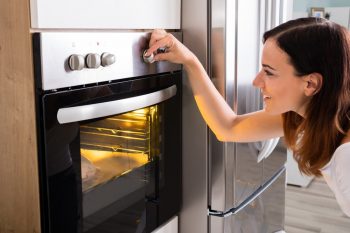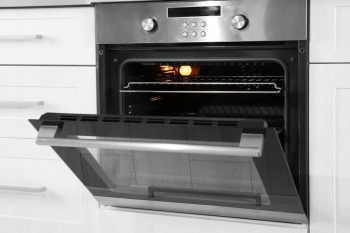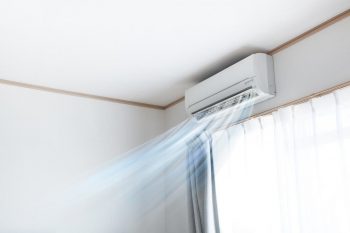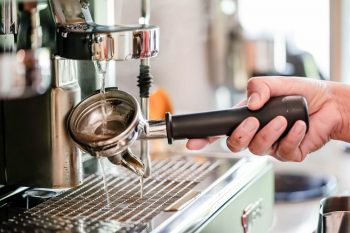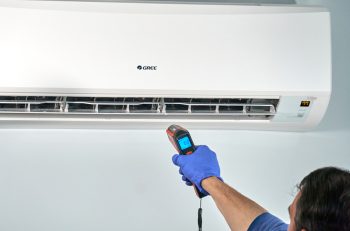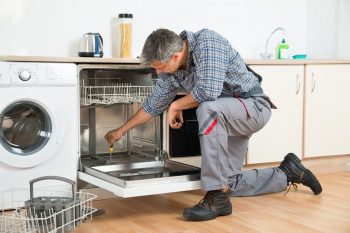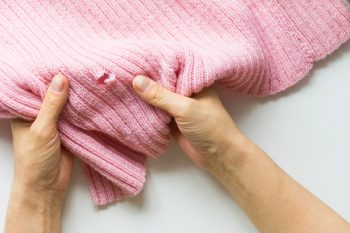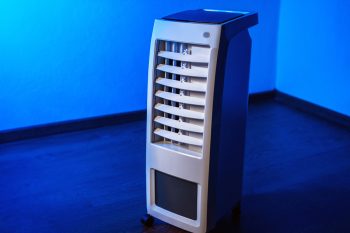
Cooking at high altitudes can be quite a challenge due to the changes in air pressure, evaporation rates, and boiling points. This is especially true when it comes to baking and oven cooking. However, with a little knowledge and a few adjustments, you can ensure that your meals and baked goods turn out perfectly. In this comprehensive guide, we’ll walk you through how to adjust oven temperature for high altitude cooking and baking.
To adjust oven temperature for high altitude, increase the oven temperature by 15-25°F for altitudes above 3,500 feet. This helps set the structure of baked goods before they over-expand and dry out. However, due to the increased temperature, the baking time should be decreased by 5-8 minutes per 30 minutes of the original baking time. Additionally, you may need to adjust recipe ingredients, such as reducing the amount of sugar and leavening agents, and increasing the amount of liquid and flour.
Understanding the Impact of High Altitude on Cooking and Baking
At altitudes of 3,000 feet or more above sea level, boiling or simmering foods require lower temperatures and longer cooking times. The temperature of boiling water changes from the standard 212°F at sea level to 208°F at 2,000 feet and continues to decrease as the altitude increases.
This lower boiling point and air pressure can drastically affect the structure and moisture content of your baked goods. Moist heating methods for meat and poultry, such as boiling, simmering, or braising, will take up to 25% more cooking time at high altitudes. Oven-roasted meat or poultry is not affected by high altitudes, and sea-level cooking instructions can be used for oven baking.
For baking at high altitudes, you may want to increase the oven temperature by 25% and decrease the baking time by 5 to 6 minutes per 30 minutes of sea-level baking time. Baking at high altitudes can cause issues with leavening agents, as gases produced by agents like baking powder and baking soda expand faster, leading to a weaker structure in baked goods. To adjust for this, you can decrease the amount of leavening agent in a recipe.
How to Adjust Oven Temperature for High Altitude
- Increase the oven temperature: For altitudes above 3,500 feet, it is recommended to increase the oven temperature by 15 to 25°F. This helps to set the structure of the baked goods before they over-expand and dry out. Remember to monitor your baked goods closely as they may cook faster at higher temperatures.
- Decrease the baking time: Due to the increased oven temperature, the baking time should be decreased by 5 to 8 minutes per 30 minutes of the original baking time in the recipe. This prevents overcooking or drying out of the baked goods.
- Adjust recipe ingredients: High-altitude baking may also require adjustments to other ingredients, such as leavening agents, flour, sugar, and liquids. For example, you may need to decrease the amount of sugar and leavening agents, and increase the amount of liquid and flour.
- Use an oven thermometer: This ensures that your oven is at the correct temperature. Oven dials can be inaccurate, and this inaccuracy can be magnified at high altitudes.
- Make one adjustment at a time: If your baked goods aren’t turning out as expected, adjust one element at a time (e.g., oven temperature, baking time, ingredient proportions). This will help you identify what is having the most impact and avoid overcompensating with multiple changes.
High-Altitude Cooking Tips and Tricks
Here are some additional tips and tricks for successful high-altitude cooking:
- Monitor dough rise: For bread, allow the dough to rise about a third, not double in bulk, before baking to prevent over-proofing.
- Use high-protein flour: Switch to a high-protein flour to help with the drier atmosphere.
- Use extra-large eggs: Use extra-large eggs instead of large eggs to account for the drier atmosphere and to provide extra liquid.
- Increase cooking time for moist-heat methods: Increase cooking times by up to 25% for simmering, boiling, or braising meat and poultry.
- Keep a tight-fitting lid on pots: This helps retain moisture and prevent evaporation during cooking.
Tools and Resources for High-Altitude Cooking
There are several online resources available to aid in high-altitude cooking adjustments. Websites like Dough-Eyed, King Arthur Baking, and Mountain Mama Cooks provide high-altitude baking recipes and tips for adjusting your baking techniques at higher elevations.
Understanding how to adjust oven temperature for high altitude is key to achieving the perfect bake. Remember, patience and flexibility are key to mastering high-altitude cooking and baking. Happy cooking!
Frequently Asked Questions
How much should I decrease the amount of sugar for high-altitude baking?
For every cup of sugar, decrease the amount by 1 tablespoon at high altitudes above 3,000 feet.
How much should I decrease the amount of leavening agent for high-altitude baking?
For each teaspoon of leavening agent, decrease it by 1/8 to 1/4 teaspoon at high altitudes above 3,000 feet.
How much should I increase the amount of liquid for high-altitude baking?
For each cup of liquid, add an additional 1 to 2 tablespoons at high altitudes above 3,000 feet.
How much should I increase the amount of flour for high-altitude baking?
For each cup of flour, add an extra 1 to 2 tablespoons at high altitudes above 3,000 feet.
Why do I need to use an oven thermometer at high altitudes?
Using an oven thermometer ensures that your oven is at the correct temperature. Oven dials can be inaccurate, and this inaccuracy can be magnified at high altitudes.
Why should I make one adjustment at a time when baking at high altitudes?
Making one adjustment at a time allows you to identify what is having the most impact on your baked goods. If you adjust multiple elements at once, you may overcompensate and not know which change made the difference.


